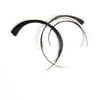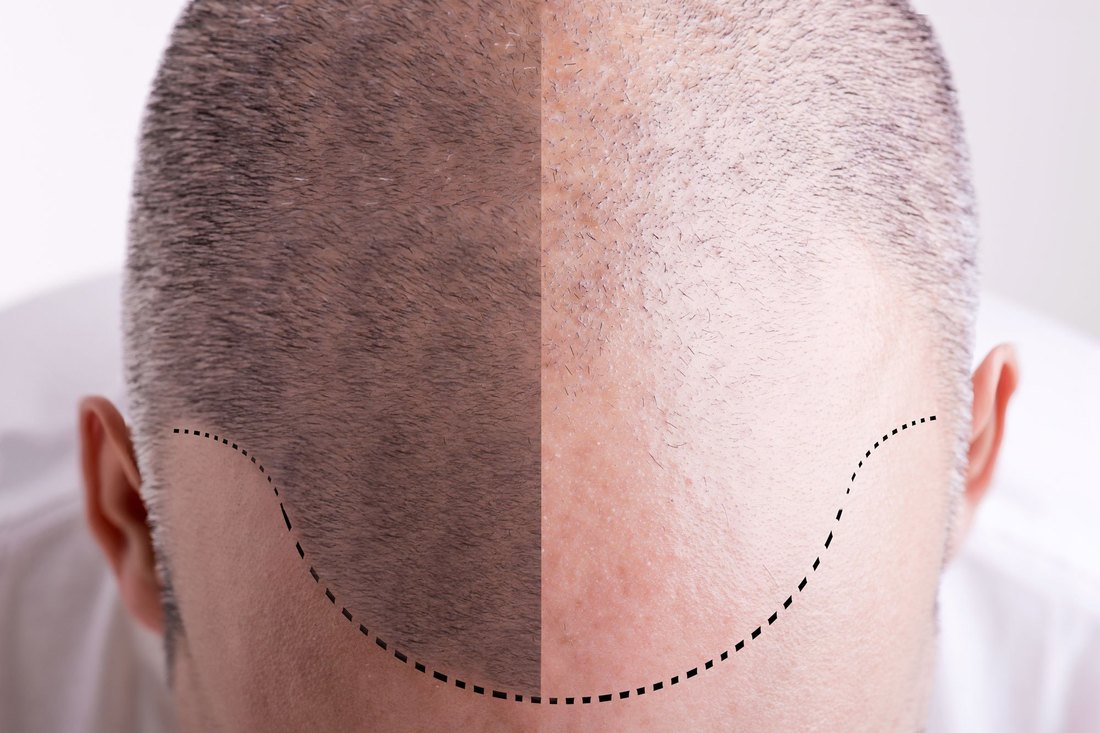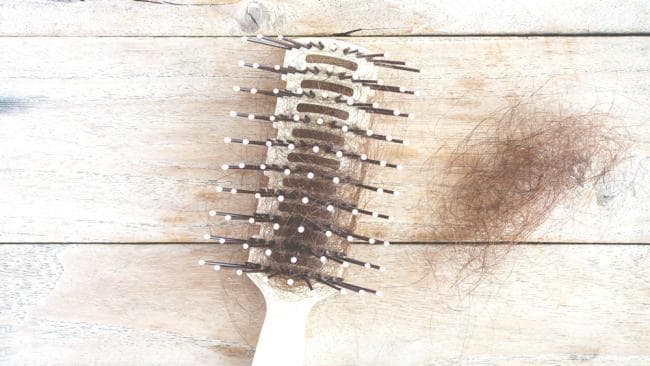|
11/2/2018 1 Comment Winter Hair Care Tips and TricksWinter takes its toll with flying hair, dry scalp and styling problems caused by wearing hats. In the winter months, hair needs a lot of tender loving care. Use our tips to avoid dull looking hair in the cold season
You may wonder why hair is dry and incredibly unruly at cooler temperatures. In the winter months hair tends to lose its silky nature and is not at all willing to submit to our styling efforts. The culprits are the low moisture contents of cool outside air and heated inside air. If you wear a hat to keep warm, the hat material will rub against the hair fibres and in the process create static electricity. As a result hair will look dull and resist all attempts at styling. Use our simple hair care strategies to reverse the mulish behaviour of winter hair. Proper Hair Care in Autumn and Winter Heat and friction interfere with the natural structure of the hair. This damages the hair cuticles, which in turn leads to brittle, dull-looking hair.
Fly-away hair is arguably the most annoying property of winter hair. It is caused by heated interior air and the contact of hair fibers with other fibers such as the fabric fibers of hats, headbands, and clothing. The movement of these fibers against hair produces static electricity, which makes hair stand on end.
The lack of moisture also results in a dry scalp. The scalp will produce less sebum, which may lead to dandruff. An itching scalp can be quite irritating.
Few people want to go outside without a hat on a cold wintery day. This keeps the ears warm but the hairdo will be undone. Hats tend to press the hair flat to the scalp.
This article is from Schwarzkop
1 Comment
11/2/2018 0 Comments Dry Winter Hair Is the WorstHere are some helpful tips to help prep your hair for winter because Dry Winter Hair Is the Worst Temperatures are dropping and the cold temperatures of winter will soon be upon us, which can really throw a kink in your hair routine. Colder weather can make tresses brittle and dry, often forcing us to make a simple ponytail our new standard ‘do. (Boring!)
Combat your winter hair woes even before the season starts to keep your mane in tip-top shape all the way to New Year’s. Fernando Salas, hair stylist and creator of White Sands Hair Products, shares his tips for prepping your hair for cold-weather gorgeousness. Amp up your hair’s moisture level To achieve a frizz-free texture with any hair type, balanced moisture in the inner structure of each strand is needed. When the hair shaft is balanced with the proper amount of moisture, the environment—in this case, winter—will not cause your strands to frizz. To achieve the perfect moisture balance, first repair any damage caused from color processing, perming, and natural UV and UVB stress with a shampoo and conditioner that can penetrate proteins deep inside the hair shaft, rather than just packing them on top. Humidity Is Your Friend (unless you’re a curly) The main cause of dry winter hair is not the temperature but the lack of moisture in the air. “You don’t have to be a living thing to feel it,” said Arash Akhavan, a dermatologist in New York. “Think of how your door may not fit as well in the jamb. You have to exert some control over your environment.” Dr. Akhavan suggested using humidifiers, avoiding space heaters (“they particularly suck out moisture”) and switching to ionic hair dryers (“because they use less heat to get the same effect”). Stop static at the start Once your hair is strong enough to withstand the winter elements, focus your cleansing routine on retaining that moisture, which will help prevent those cold-weather flyways. Products with wheat amino acids promote moisture when applying hot tools, while those with silk amino acids have properties that create a positive charge to damaged hair fibers and will keep your tresses polished. Deep condition the right way It’s important to close the cuticle layer to define color, texture and shine all season long. Deep conditioners, like White Sands ER Fusion Deep Reconstructive Conditioning Treatment, can bring you some serious hair help. The formula contains amino cystines to repair damage and lemongrass extract to enhance color. The product shows results lasting up to 30 days and takes just 20 minutes to apply and heat-set. Coat Your Hair The trick is trapping moisture, which is essentially how hydrating shampoos and conditioners work. The Oribe Gold Lust Pre-Shampoo Intensive Treatment ($68) has a thick balmlike formula. Traditional creams don’t adhere well to the hair, said Michele Burgess, the director of product development at Oribe. The coating works especially well on coarser textures. For finer strands, a less viscous formula, like Ouai Hair Oil ($28), may be better. It is a top seller in the Ouai line, according to its founder Jen Atkin, known for her work with the Kardashians. “It can double as a both styling product and mask so you can wear it while you sleep or work out,” she said. Boost limp locks Since dry winter air can leave hair flat against the scalp, products with style memory are a must to create—and maintain—your favorite hairstyle throughout the day. If you tend to wear hats during winter, a style memory spray can also ensure that deflated hair is a problem of the past. Try White Sands Liquid Texture Styling Spray line, which boasts long-lasting staying power, no matter what the weather’s like. The sprays are actually “thermal intelligent” (as in, they make your locks look even shiner and stronger when you use your hot styling tools) and they’ll help your hair bounce back right into place—even after wearing a beanie. Schedule that trim Dry air means more split ends. A simple trip to your stylist is a must as you prepare for the deep freeze. After all, split ends and damaged cuticles will cause your hair to appear thinner and give it that unwanted stringy look. Hair that’s weakened toward the ends is in need of a quick chop. Treat Your Hair Like Your Cashmere Hair may not be alive like, say, skin cells, but you still have to treat it delicately. David Mallett, who is opening a Manhattan outpost of his Parisian salons this spring, said it helps to think of hair as a fiber. “You wouldn’t throw your cashmere in steaming hot water, so look after your hair and love it the same way,” he said. Mr. Mallet has noticed that clients often show up at his salons in the winter with dry, itchy scalps because they use hotter water when it’s cold outside. “Lay off the hot water and use lukewarm or even cold,” he said. Deep Condition Your Hairbrush It’s natural to reach for intense conditioners and hair masks when the mercury drops, but sometimes those products flatten hair. Instead, Mr. Mallett offers this genius tip: “Get a natural bristle brush, and after you clean it, deep condition the brush regularly with a hair serum, oil or leave-in conditioner. This way, when you brush through your hair, it gives it extra shine but without weighing it down.” Kick Up the Keratin If you think a keratin treatment means a mop of stick-straight hair, think again. Keratin has grown up. In-salon services can now hydrate and soften but leave texture intact. “With Japanese hair straightening, and later Brazilian blowout, you stripped the keratin and broke the disulfide bonds in your hair so it became very straight, and then you replaced the keratin,” Dr. Akhavan said. “But keratin can also be used just as a long-lasting conditioner.” More accessible: Virtue’s keratin-infused shampoos and conditioners, which can be used at home. Adir Abergel, Virtue’s creative director, who works with Rooney Mara, Reese Witherspoon and Saoirse Ronan, particularly likes the company’s Smooth Conditioner ($38) and Perfect Ending Split End Serum ($40). “In the winter, you’ll want to leave your product on your hair a little longer to really let it penetrate,” Mr. Abergel said, adding that getting ends trimmed more often than usual can also help maintain hair health. Read the Label Read up! There may be hidden drying agents lurking in your styling products. Arsen Gurgov, a stylist who often works with Emmy Rossum, advised “staying away from styling products with alcohol as they tend to dry out the hair even more.” If you have a favorite conditioner that contains silicones, you may want to swap it for a silicone-free version. “Silicones can build up with repeated use and coat the hair too much, making it dull and lifeless,” Mr. Gurgov said. His simple solution: Use pure argan oil before blow-drying to prep the hair and again afterward to finish the style. This information is from articles that appeared on StyleCaster and The New York Times Can you trust your hair transplant provider? Man For Himself contributor Spencer “Spex” Stevenson discusses the growth of phoney transplant providers, the danger, and what you can do to always receive the hair transplant you’ve paid for.
As you know, our soggy island has encountered one of the most resplendent summers in recent memory. And while many us ‘mane purveyors’ have been out and about proudly displaying our hirsute chests and man-scaped bonces, the transplant industry has been warming up at an unbelievable rate as well. The worry for us follicle chasers is that the industry is increasingly awash with unscrupulous operators, peddling below-par products and services. Sadly, the number of repair patients is growing every day. The reality is, us hair growth journeymen (and women) are now faced with a very serious danger, with so-called practitioners impersonating industry professionals and stopping at nothing to make a quick buck. As we enter an increasingly perilous landscape, there’s no question that certain individuals are actually regressing the space that numerous qualified and master craftspeople have committed their lives to; with many offering pioneering products and a level of service that has made huge strides in the search for a cure to male pattern baldness. The issue has been further opened up by the maelstrom that is the Interwebs, which can be a heaving, breathing mess of fake news and false claims. This has made it even harder for the reputable ‘players’ to get the truth out there; and in doing as such ensure the blameless, know-no-better patients avoid being on the end of what amounts to a modern-day scalping. Over the years, I’ve got to know patients looking for my guidance in the area of hair repair. Shockingly, many of these human guinea pigs have been utilised and manhandled by the business’ greatest criminals – as was I! Read the rest of this article here >>> Wondering how to make your hair grow faster? Let the pros from Matrix reveal their top hair growth tips!
1. Set Realistic Hair Goals You may think your hair grows slower than everyone else’s but the fact is that hair growth takes time. Scientists say the average rate of hair growth is about ½ inch per month, with slight variations for hair type. Curly, fragile hair grows a bit slower than straight, thick hair. Be sure to use strengthening masks like our Miracle Creator Multi-Tasking Hair Mask to revitalize your fragile strands. So if you’re planning to grow out your pixie cut, don’t expect to grow waist-length hair overnight, but you can expect a short haircut to be shoulder length in about 14 months. 2. Keep Your Hair Healthy To ensure that your hair grows in step with the healthy average rate, remember this: stronger hair = longer hair. If your hair is on the damaged side, use a reparative system like Biolage FiberStrong which fortifies fragile hair. You’ll tip the hair growth odds in your favor if the hair you have is as strong and healthy as possible. “This fact,” says Matrix Artistic Director Michael Albor, “is truly at the root of it all.” 3. Start With Proper Nutrition You are what you eat, and that goes for your hair. Nutritional deficiencies are some of the biggest culprits behind weak, damaged hair with constant breakage that refuses to grow. If you’re really concerned that your hair simply won’t grow and are desperate to grow your hair faster, check in with your doctor to see if everything is on target health-wise. If you have an iron deficiency, for example, it can cause your hair to be thin and dull. Many doctors recommend foods containing omega-3 fatty acids, vitamin B and vitamin E to provide the type of nourishment that enhances hair growth. And many women have found favorable results after several months as a result of taking hair supplements containing biotin, vitamins and anti-oxidants. 4. Trim Hair Regularly It’s tempting to avoid scissors completely when you’re trying to grow your hair, but frequent hair trims are actually a wise strategy. Keeping your ends crisp and neat helps prevent split ends and fraying, which can lead to hair breakage and slow down the rate of hair growth. So keep up those regular, six-to-eight week haircut appointments, and let your hairstylist “dust” the ends, i.e. remove a fraction of an inch to keep each hair strong and intact. 5. Color Your Hair with Care Frequent forays with hair color and lighteners can cause dryness, split ends, dull hair and breakage. That’s because with hair color, you’re ultimately disrupting the top, protective layer of hair to allow the hair color to penetrate. You don’t have to give up your hair color completely, just opt for a less drastic hair color shade change. This will allow your hair stylist to use formulas that don’t have to disrupt your hair too drastically. Also, talk to your stylist about bond repair additives that protect the bonds of your hair from damage during the hair color process, and will also prevent additional hair color damage from occurring. And to take it a step further, use an at home bond restorative system like Total Results The Re-Bond that helps fortify weakened, over processed hair. 6. Condition Hair Conscientiously Conditioners are your hair’s best friend—they help you detangle, they keep your hair soft and shiny. “There are conditioners for every hair type,” says Albor, “and everyone should find the right formula and apply it after every shampoo. You can even skip a shampoo from time to time and go straight to the conditioner.” Leave-in treatments are great to help with detangling and protect the hair from heat. And a weekly hair mask or oil-based hair treatment will help take care of the older, more fragile ends that are susceptible to breaking off. 7. Avoid Heat Damage High heat styling tools are surefire aids for creating and locking in beautiful hairstyles, but too much heat can have damaging long-term effects on your hair. If air-drying is an option for your hair, put your hair dryers and irons aside when possible. (A heatless hair styling crème will help put shape in your hair while controlling frizzy hair.) You can also explore alternative hair setting options, such as braids, twists and good old foam or Velcro hair rollers. When you do opt in for blow drying, set the temperature as low as you can in order to accomplish your desired hairstyle, and keep the blow dryer nozzle at least six inches from your scalp. A lower heat setting is also the best strategy when using flat irons and curling irons, and be sure to shield your hair from heat damage with heat protection products. 8. Don’t Forget Good Scalp Care Healthy hair growth starts with a healthy scalp. Keeping the hair follicles on the scalp clean and clear from product or oil buildup will prevent the growth rate from slowing down. Try not to over-use your dry shampoos. While they’re an excellent way to absorb excess oil on the scalp, over-using them can cause buildup that clogs hair follicles. Treat yourself to frequent scalp massages—they’re not only sooooo relaxing, they also rev up the circulation in your scalp that will keep your hair nourished. Finally, consider a weekly scalp “scrub” treatment to remove product residue and excess oil. Consider it exfoliation for your hair and scalp. 9. Brush Hair Wisely First off, never brush your hair when it’s wet. Use a wide tooth comb (or a brush specifically designed for wet hair) to detangle, and work slowly and carefully from the bottom up to avoid hair breakage. When your hair is dry, brush it with a cushioned brush with boar bristles, which are gentle on fragile hair. Use the brush to stimulate your scalp and enhance circulation and healthy hair growth. About 15 or 20 strokes a day will do the trick. 10. Avoid Mechanical Hair Damage Environmental hair damage—too much sun or saltwater—and chemical hair damage from hair color, relaxers, straighteners or perms are two ways that hair becomes damaged when you’re trying to grow it. Mechanical hair damage is another way. That happens when you wring your hair too tightly with a coarse towel, bind it too firmly into a ponytail or sleep on a rough pillowcase. All of these bad hair habits can lead to hair breakage. So swap out the terry cloth for a soft micro-fiber towel or cotton t-shirt and blot your hair gently after shampooing. Use fabric-coated elastic hair bands to secure your ponytails and buns, and don’t put them in the same spot every day. Finally, treat yourself to a sateen or satin pillowcase that won’t cause the friction that leads to the hair tangles that can weaken your hair. This article appeared on Matrix In a study conducted in mice, researchers from Johns Hopkins were able to confirm that a Western-style diet — high in fats and cholesterol — has a negative impact on hair and skin health. They went even further, however, developing a drug that is able to reverse the damage. In an open access paper recently published in the Nature journal Scientific Reports, Subroto Chatterjee and colleagues from Johns Hopkins Medicine in Baltimore, MD, show that a diet high in fats and cholesterol can lead to skin inflammation, as well as hair loss and hair whitening.
Based on their initial findings, the researchers also developed an experimental drug, D-threo-1-phenyl-2-decanoylamino-3-morpholino-1-propanol (D-PDMP), hoping it would help them reverse the effects of an unhealthful diet on skin and hair. D-PDMP regulates the production of a type of fats (lipids) known as "glycosphingolipids" (GSLs), which are part of the membranes of skin cells and other cell types. In particular, GSLs are a major component of skin cells that make up the external skin layer and of keratinocytes, a type of cell that participates in the pigmentation, or coloring, of skin, hair, and eyes. "Further research is needed, but our findings show promise for someday using the drug we developed for skin diseases such as psoriasis and wounds resulting from diabetes or plastic surgery," says Chatterjee. Western diet tied to hair, skin damage The research team tested the effects that a fatty diet would have on the skin and hair of mice, as well as the effectiveness of the specially designed compound in offsetting the damage. Chatterjee and team worked with a group of mice that they had first genetically modified to express symptoms of atherosclerosis, a condition in which fat deposits form inside arteries, obstructing the free flow of blood. The researchers split the mice into two distinct groups: one of these was assigned a regular mouse diet, while the other was allocated a high-fat, high-cholesterol diet — similar to a Western-style regimen. All the mice were 12 weeks old when they started on their respective diets, and the researchers conducted their first assessments when the mice were 20 weeks old. The team found that the mice on a Western-style diet had begun to lose hair and displayed hair whitening and skin lesions. At 36 weeks of age, 75 percent of the mice that had stayed on the high-fat and high-cholesterol diet had multiple skin lesions, as well as more severe hair loss. When the mice were between the ages of 20-36 weeks, the researchers gave them all D-PDMP in varying amounts, either in liquid form or in capsule form, as they each stayed on their assigned diet. After receiving either 1 milligram and 10 milligrams per kilogram of body weight of D-PDMP in capsule form, the mice on a fatty diet started to regain their lost hair, as well as their initial hair color. Skin damage also started to heal. Chatterjee and team also noted that treating the rodents with 1 milligram of D-PDMP in capsule form per kilogram of body weight was as effective in reversing skin and hair damage as 10 milligrams in liquid form per kilogram of body weight. This, the researchers explain, suggests that capsules are more effective in delivering the compound. Experimental drug may restore health So, what did D-PDMP do specifically? The research team observed that the skin of mice following a Western-style diet showed numerous signs of neutrophil infiltration. Neutrophils are a type of white blood cell that plays a role in inflammation. Encapsulated D-PDMP reduced the number of neutrophils observed, suggesting that the substance was effective in reducing skin damage and inflammation. The researchers also noted that rodents on a fatty diet had modified levels of three important kinds of lipids — ceramides, glucosylceramides, and lactosylceramides — which normally help to maintain skin health. 'Faster, more effective recovery'" Our findings show that a Western diet causes hair loss, hair whitening, and skin inflammation in mice, and we believe a similar process occurs in men who lose hair and experience hair whitening when they eat a diet high in fat and cholesterol," emphasizes Chatterjee. While the study researchers are hopeful about the promising results they obtained with D-PDMP in mice, they nevertheless point out that more animal research has to be carried out, in order to establish exactly how much of the compound is necessary to fully treat the damage caused by Western-style diets in hair and skin. Moreover, the team also warns that the results seen in mice may not apply to people, as that is an aspect that is yet to be confirmed. D-PDMP's safety for human ingestion has also not yet been established. Still, the scientists think of their current findings as the first step toward better ways of maintaining or restoring hair and skin health. This article first appeared on Medical News Today |
Hair by BrianMy name is Brian and I help people confidently take on the world. CategoriesAll Advice Announcement Awards Balayage Barbering Beach Waves Beauty News Book Now Brazilian Treatment Clients Cool Facts COVID 19 Health COVID 19 Update Curlies EGift Card Films Follically Challenged Gossip Grooming Hair Care Haircolor Haircut Hair Facts Hair History Hair Loss Hair Styling Hair Tips Hair Tools Health Health And Safety Healthy Hair Highlights Holidays Humor Mens Hair Men's Long Hair Newsletter Ombre Policies Procedures Press Release Previous Blog Privacy Policy Product Knowledge Product Reviews Promotions Read Your Labels Recommendations Reviews Scalp Health Science Services Smoothing Treatments Social Media Summer Hair Tips Textured Hair Thinning Hair Travel Tips Trending Wellness Womens Hair Archives
June 2025
|
|
Hey...
Your Mom Called! Book today! |
Sunday: 11am-5pm
Monday: 11am-6pm Tuesday: 10am - 6pm Wednesday: 10am - 6pm Thursday: By Appointment Friday: By Appointment Saturday: By Appointment |





 RSS Feed
RSS Feed